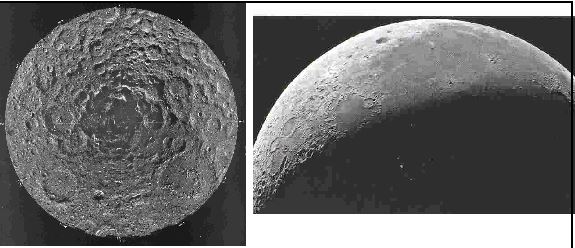© 2004 Ken Glasziou
© 2004 The Brotherhood of Man Library
There has been some criticism of an article in the July-August issue of Innerface regarding our interpretation of the revelators’ use of the words “mass” and “size” in their description of the growth over time of the earth-moon system.
The revelators state, “2,500,000,000 years ago the planets had grown immensely in size. Urantia was a well-developed sphere about one tenth its present mass and was still growing rapidly by meteoric accretion.” UB 57:6.10
Then they have: “2,000,000,000 years ago the earth began decidedly to gain on the moon. Always had the planet been larger than its satellite, but there was not so much difference in size until about this time, when enormous space bodies were captured by the earth. Urantia was then about one fifth its present size. . . .” UB 57:7.2
The wording of this last paragraph encourages the belief that these two bodies had grown at the same rate and been much the same size throughout their more than 2 billion year lifetime.
The process of growth by accretion of the earth and its moon satellite while retaining the same growth rate over their first 2 billion years, if it were really true, would indicate that these two bodies utilized the same source materials for their growth as they orbited both one another and the sun together. This conclusion is supported by the announcement (Science, October 12, 2001) that large-scale analysis of rocks and soils from both earth and moon (from the Apollo program) have demonstrated that both are derived from materials having identical oxygen isotope ratios–ratios which vary by large amounts at different spatial locations.
Thus it is difficult to see how, up to the time of the stated capture by planet earth of enormous space bodies 2 billion years ago, this planet and its satellite moon could have had other than similar densities. And if they did that then the revelators’ apparently careless use of the terms mass and size becomes explicable, because the relationship, density = mass/volume, means that 2 bodies having the same density and mass must have the same volume or if they have the same density and volume, they must also have the same mass.
However readers should be aware that the slow co-accretion concept for moon and earth, while in favor at the time of receipt of the Urantia Papers, is now known to be quite incompatible with data since accumulated–hence in the category of “proscribed unearned knowledge” (UB 101:4.1), but totally adequate as a “frame in which to think.” (UB 115:1.1)

The moon’s south pole (above) clearly shows the impact craters that pock-mark most of the surface of the moon except for that which has been obscured by later larva tlows. Radioactive- isotope dating shows that the great majority of such impact craters occurred befare 3.9 billion years ago—indicating the moon was close to fully formed by that time, otherwise the craters ould have been obliterated by newly accreted material.
The highland rocks (breccias), that appear to have been melted by an impact event, fall into he 3.85 to 4.0 billion years Old age group; the basalts that make up the dark maria surfaces ere formed around 3.85 billion years ago, while between 3.7 and about 3 to 25 billion years ago, lava flowed out across the lunar surface to fill low lying areas.
Virtually all major activity appears to have ceased by 3 billion years ago. According to the Urantia Book version it had barely commenced.
¶ References
- www.physics.uq.edu.au/people/ross/phys20B1/moon/rnoon8.htm also Spudis, S.P., Scientific American, The New Moon, 289 (E) December, 2003.
¶ Notes
Modern radioactive dating of racks has been revolutionized by the use of zircons and advanced instrumentation—now being about plus or minus I million years in 3 billion. For review see Earth Inside and Out, (Ed. E.A. Mathez) American Museum of Natural History, 2001, p. 46- 47. The New Press, N.Y.